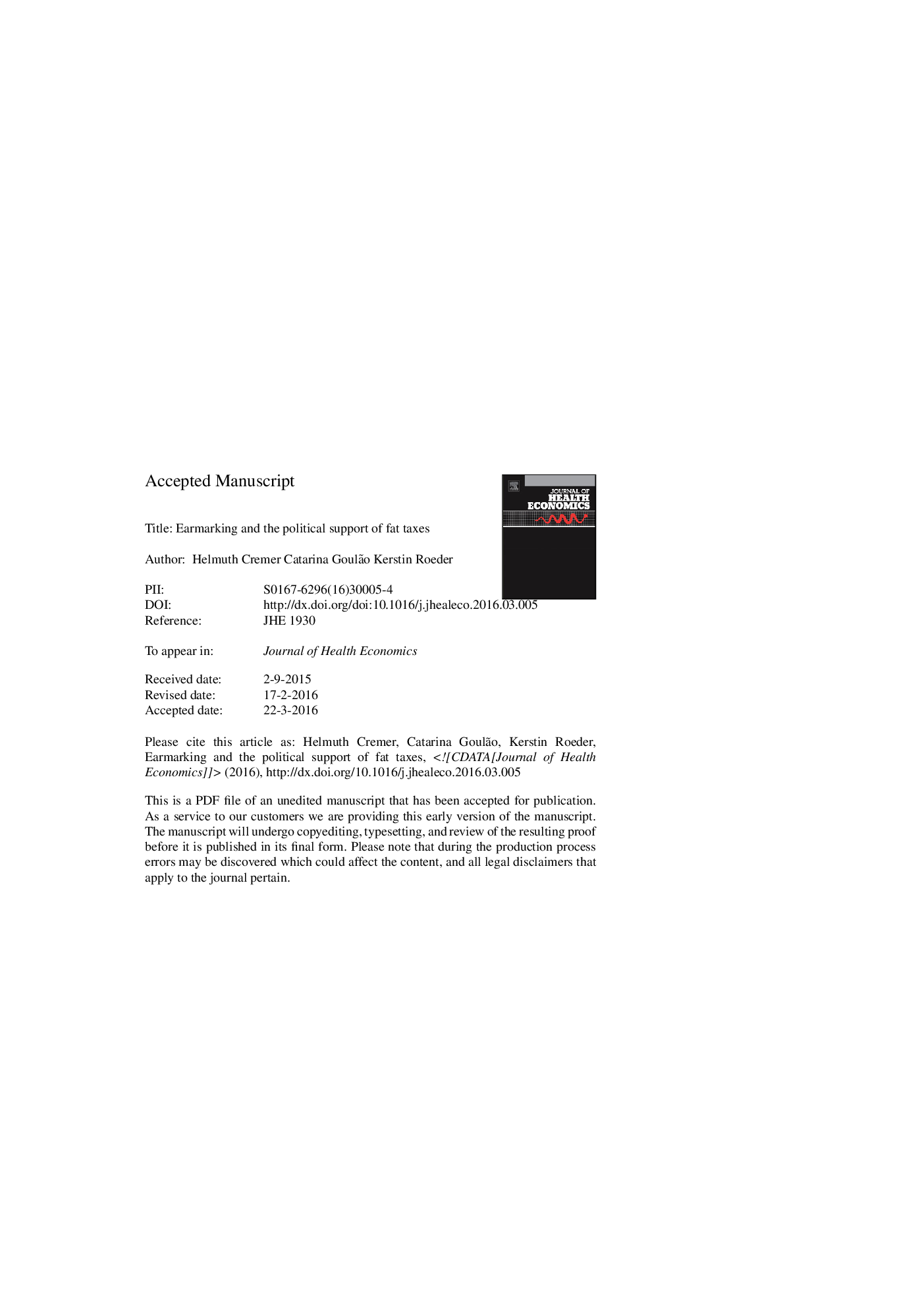| Article ID | Journal | Published Year | Pages | File Type |
|---|---|---|---|---|
| 5100813 | Journal of Health Economics | 2016 | 32 Pages |
Abstract
An unhealthy good causes health issues in the long run. It creates a misperceived utility loss and increases health care costs. Conversely, a healthy good provides misperceived utility gains and reduces health care costs. Individuals differ in income and in their degree of misperception; they vote over a fat tax according to their misperceived utility. A fraction of the tax proceeds is “earmarked” to reduce health insurance premiums; the remainder finances a subsidy on the healthy good. This earmarking rule is determined to maximize welfare, anticipating the induced political equilibrium. The equilibrium fat tax is always lower than the utilitarian level. This is not necessarily true with a Rawlsian objective. The determination of the earmarking rule is complex. Even in the utilitarian case, it is not just used to boost political support for the fat tax. Instead, it may involve a tradeoff between fat tax and healthy good subsidy.
Related Topics
Health Sciences
Medicine and Dentistry
Public Health and Health Policy
Authors
Helmuth Cremer, Catarina Goulão, Kerstin Roeder,
